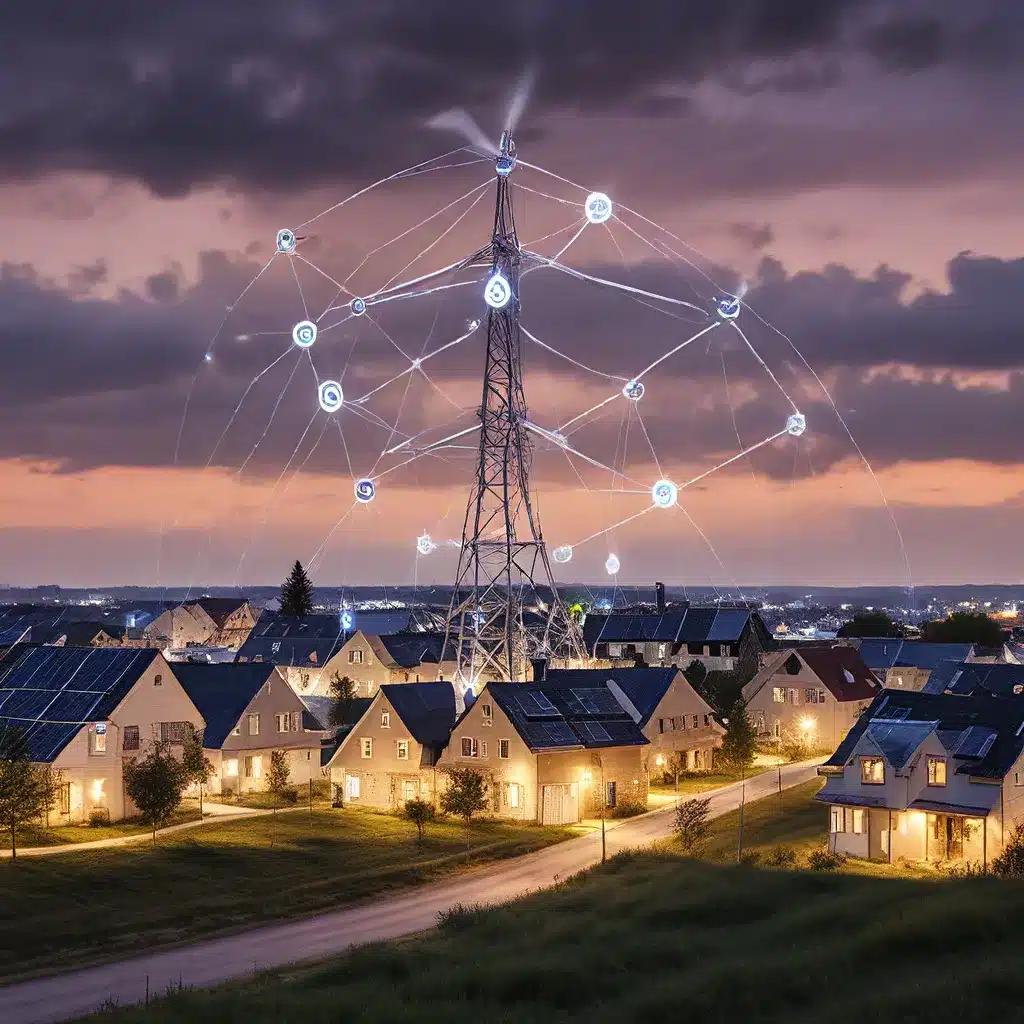
As the Internet of Things (IoT) continues to revolutionize industries across the globe, the demand for secure and energy-efficient sensor networks has become increasingly critical. With the exponential growth of connected devices and the vast amount of data they generate, the need for robust, reliable, and sustainable IoT solutions has never been more pressing.
Navigating the IoT Landscape: Secure Sensor Network Design
At the heart of any successful IoT ecosystem lies the sensor network. These interconnected devices, equipped with various sensors, collect and transmit data, enabling real-time monitoring, optimization, and automation. However, designing secure and resilient sensor networks is a complex challenge that requires a deep understanding of the underlying technologies and potential vulnerabilities.
Experts in the field emphasize the importance of adopting a holistic approach to sensor network design, one that addresses both security and energy efficiency. By integrating robust security protocols, such as end-to-end encryption, access control, and intrusion detection, organizations can mitigate the risks of cyber threats and ensure the integrity of their IoT systems.
Furthermore, the energy management of sensor nodes is a critical consideration. Low-power sensor technologies, energy-harvesting techniques, and efficient communication protocols can significantly enhance the longevity and sustainability of IoT deployments, reducing maintenance costs and environmental impact.
IoT Applications: Revolutionizing Industries
The versatility of IoT applications is truly remarkable, with sensor networks and connected devices transforming industries ranging from manufacturing and energy to healthcare and smart cities. Let’s explore some of these transformative use cases:
Manufacturing: Predictive Maintenance and Optimization
In the manufacturing sector, IoT-enabled predictive maintenance solutions leverage sensor data to anticipate equipment failures and schedule proactive maintenance. This not only reduces downtime and maintenance costs but also improves product quality and operational efficiency.
Energy service plans further enhance these benefits by providing specialized expertise in energy management and optimization. By integrating smart grid technologies, manufacturers can reduce energy consumption, optimize production processes, and enhance their sustainability initiatives.
Smart Cities: Intelligent Infrastructure and Resource Management
The smart city concept is another area where IoT is making a significant impact. Sensor networks deployed across urban environments can monitor and manage various infrastructure systems, such as traffic, waste management, and water distribution. This data-driven approach enables real-time decision-making, resource optimization, and improved quality of life for citizens.
Importantly, the security and energy efficiency of these IoT systems are paramount, as they handle sensitive data and critical infrastructure. Secure communication protocols and energy-efficient sensor nodes are essential to ensure the reliability and sustainability of smart city initiatives.
Healthcare: Remote Monitoring and Personalized Care
In the healthcare industry, IoT-powered remote patient monitoring solutions are revolutionizing patient care. Wearable devices and implanted sensors can continuously collect and transmit vital signs, medication adherence, and activity data, enabling healthcare providers to monitor patients’ conditions remotely and personalize treatment plans.
These IoT applications not only improve patient outcomes but also reduce healthcare costs and alleviate the burden on healthcare systems. However, the security and privacy of sensitive medical data must be meticulously addressed to comply with regulatory requirements and maintain public trust.
Securing the IoT Ecosystem: Addressing Vulnerabilities
As the IoT landscape continues to expand, the importance of comprehensive security measures cannot be overstated. Sensor networks and connected devices are inherently vulnerable to a wide range of cyber threats, including data breaches, unauthorized access, and malware attacks.
To mitigate these risks, multi-layered security approaches are essential. This includes encryption of data at rest and in transit, secure device authentication, access control mechanisms, and intrusion detection systems. Additionally, regular software updates and firmware patches are crucial to address emerging vulnerabilities and maintain the overall resilience of IoT systems.
Sustainable IoT: Embracing Energy-Efficient Solutions
As the demand for IoT applications grows, so does the need for energy-efficient and environmentally-friendly solutions. Sensor nodes with low-power consumption, energy-harvesting capabilities, and efficient communication protocols can significantly reduce the carbon footprint of IoT deployments.
Furthermore, the integration of renewable energy sources, such as solar and wind power, into IoT systems can enhance their sustainability and self-sufficiency. Energy service plans that incorporate these green technologies can help organizations optimize their energy use, lower their operating costs, and demonstrate their commitment to environmental stewardship.
The Future of IoT: Convergence with Emerging Technologies
The future of IoT is poised for even greater advancements as it converges with other cutting-edge technologies, such as artificial intelligence (AI), machine learning (ML), and edge computing. These synergies will enable real-time data processing, predictive analytics, and autonomous decision-making at the edge, further enhancing the efficiency and intelligence of IoT systems.
Moreover, the integration of digital twins and simulation models into IoT ecosystems can help organizations optimize their operations, test new strategies, and mitigate risks before deploying physical solutions. This convergence of technologies will drive unprecedented levels of sensor network optimization, security, and sustainability, paving the way for a more connected, efficient, and environmentally conscious future.
In conclusion, the IoT revolution is profoundly transforming industries across the globe, and the secure and sustainable design of sensor networks is at the core of this transformation. By embracing robust security protocols, energy-efficient technologies, and innovative applications, organizations can harness the full potential of IoT to drive operational excellence, cost savings, and environmental sustainability. As the IoT landscape continues to evolve, the future holds immense promise for a more connected, intelligent, and sustainable world.